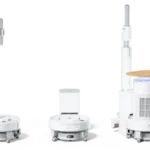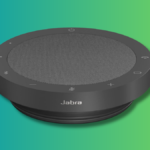The Advantages of Upgrading to a Presence Sensor for Your Home
When it comes to home automation, the motion sensor is often a popular choice for first-time buyers. However, opting for a presence sensor can greatly enhance your smart home experience. The latest addition to this category, the FP300, was recently unveiled by Aqara at CES 2025.
Traditional motion sensors operate based on changes in light. They detect movement by identifying shifts in light patterns as individuals navigate a space. Although effective, this method poses challenges; anyone who has spent time in an office or library late at night is familiar with the frustration of a motion sensor failing to detect subtle movements, resulting in sudden darkness due to inactivity.
On the other hand, presence sensors utilize advanced radar technology to monitor a room for even the tiniest movements. Unlike motion sensors, they do not only detect larger physical actions—instead, they can sense a person’s breath or even identify if someone has fallen. Furthermore, presence sensors excel at differentiating between pets and humans, making them a superior choice for any application relying on occupancy detection. User interaction remains similar, as these devices are mounted high on the wall or ceiling, integrating seamlessly with automation systems. The FP300 is compatible with various platforms, including Alexa, Apple Home, Google Home, Home Assistant, Homey, and SmartThings.
Aqara has been at the forefront of presence sensor technology since launching the original FP1 in 2021, followed by the FP2 in 2023. Each release has garnered accolades from prestigious organizations like IFA and CES. The introduction of yet another sensor took many by surprise, raising questions about what new features could be introduced.
One noteworthy advancement in the FP300 is its battery operation. While this change might seem trivial, it holds significant importance. Unlike many sensors that rely on continuous power through cords, the FP300 offers a wireless solution. This enhanced flexibility allows for easier placement of sensors in locations that were previously inconvenient due to wiring constraints. The convenience of a cordless design could encourage broader usage, eliminating the hassle of frequent recharging or battery replacements. Aqara promises an impressive two-year battery life.
Additionally, the FP300 comes with several other enhancements. It is Matter-enabled and also supports Threads and Zigbee, ensuring its compatibility with a wide range of smart home ecosystems that are expected to remain relevant for years to come. The sensor incorporates an array of technologies, including mmWave radar, passive infrared, as well as light, temperature, and humidity sensors, providing a comprehensive analysis of the environment within a 20-foot radius.
As a leader in the smart home sensor market, Aqara is recognized for offering an extensive portfolio of reliable and efficient sensors. Through rigorous testing, their devices have proven to be the most dependable, complemented by a user-friendly app designed for easy pairing and immediate functionality. Anticipation builds for the FP300, though specific release dates and pricing details have yet to be disclosed.












